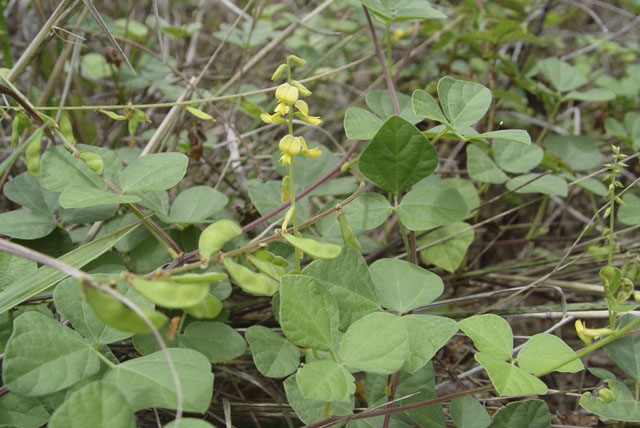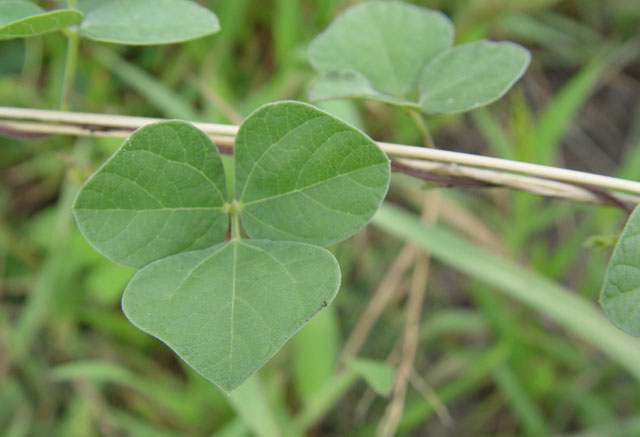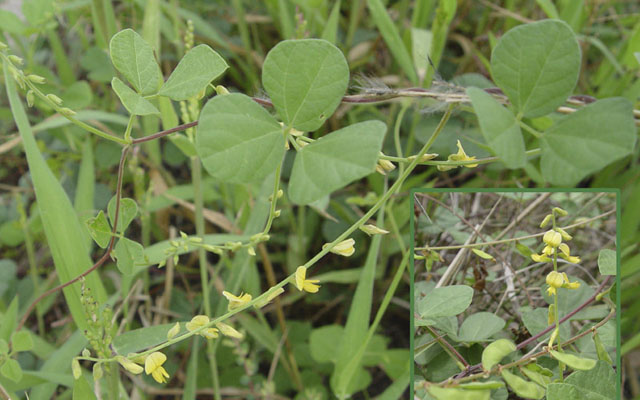Rhynchosia minima
Linnaeus

Rhynchosia minima Snoutbean, courtesy of Melody Lytle


Rhynchosia minima Snoutbean, courtesy of Melody Lytle
Leaves ocur in groups of three (trifoliate), and the individual leaflets are rhomboid, ovate or sub-orbicular, as wide as they are long with a slightly pointed tip.

Rhynchosia minima Snoutbean, courtesy of Melody Lytle
Six to twelve, small, yellow flowers open along a 5 to 10 cm long raceme. The calyx or green whorl at the base of each flower has five lobes.
The subsequent oblong, two seeded pods are small, 1 to 1.5 cm long x 0.4 to 0.6 cm wide, and are black when ripe.
In North American it occurs from the southern United States (South Carolina to Florida and Texas) to Mexico.
The following North American butterfly species utilize Rhynchosia minima as a larval host.
Hesperiidae: Epargyreus clarus .
Lycaenidae: Hemiargus ceraunus.
Use your browser "Back" button to return to the previous page.
This page is presented by
Bill Oehlke. This site
is presented as an extension of the
World's Largest Saturniidae Site, a private worldwide silkmoth site,
Caterpillars Too!,
a private North American butterfly site featuring images of
caterpillars,
and
Sphingidae of the Americas,
a free public access site with pictures and information about
the Sphingidae (Hawkmoths) of the Americas.
Larval hostplant lists have been compiled from
the Natural History Museum's
HOSTS - a database of the world's Lepidopteran hostplants